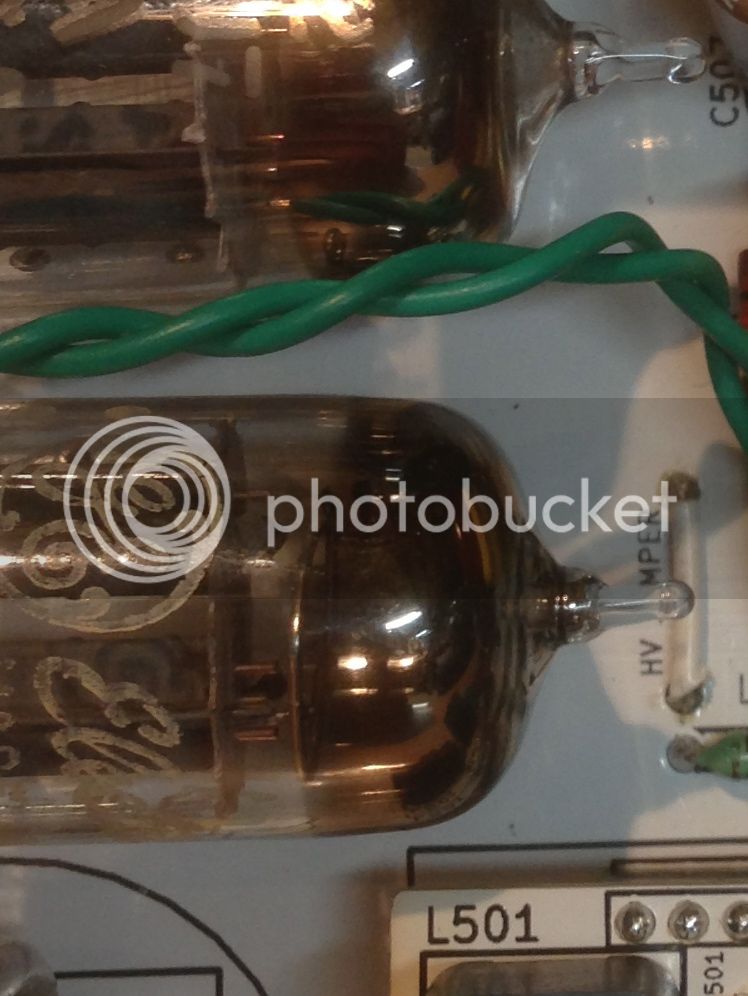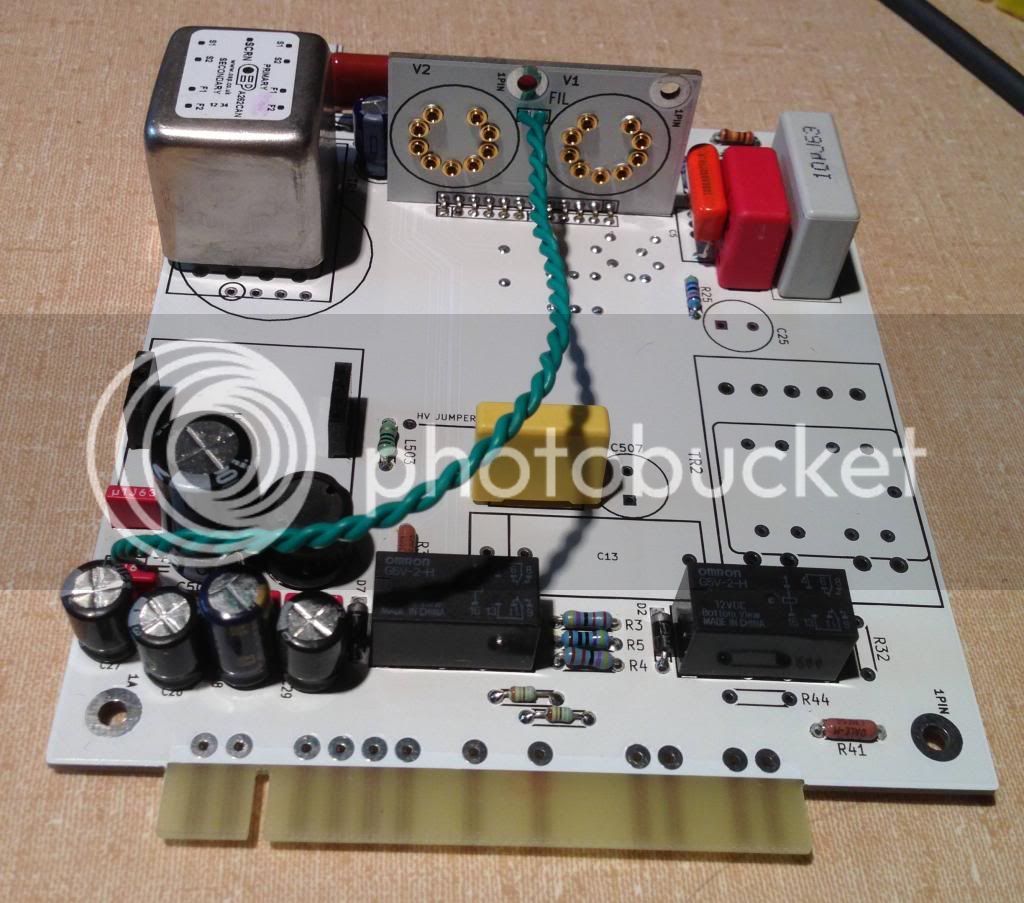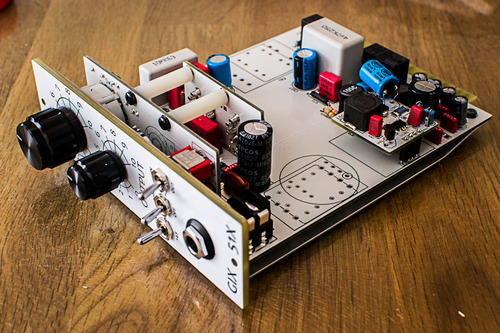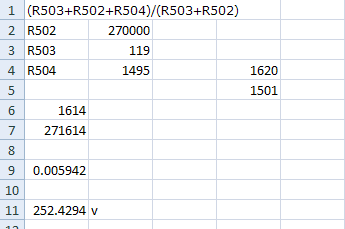Success. I am happy with the now undetectable (to me) noise levels in the HV power supply now, and I am in the process of putting all the modules together the same way.
I am using the 330uH power inductor (L501) with the .250 sense resistor as originally spec'd. ( See note below on Inductor tests I ran if interested), replacing L503 with a bourns 1200uH inductor and a .1uF cap on the back of the board to ground. I am using 200 Ohms as a HV Jumper, and I am putting shields on the HV board, because I think I heard the difference, but I am no longer sure and I am venting them because the get mildly warm and there is an electrolytic in there. I have updated the previous post with my final changes.
The preamp is quiet, and as I have been doing testing and the differences I hear are from individual noisy tubes, and I have replaced a couple and all 4 modules are quiet now.
I have attached an updated BOM to this post with the parts I used.
bb
Note: Leaning inductor L503
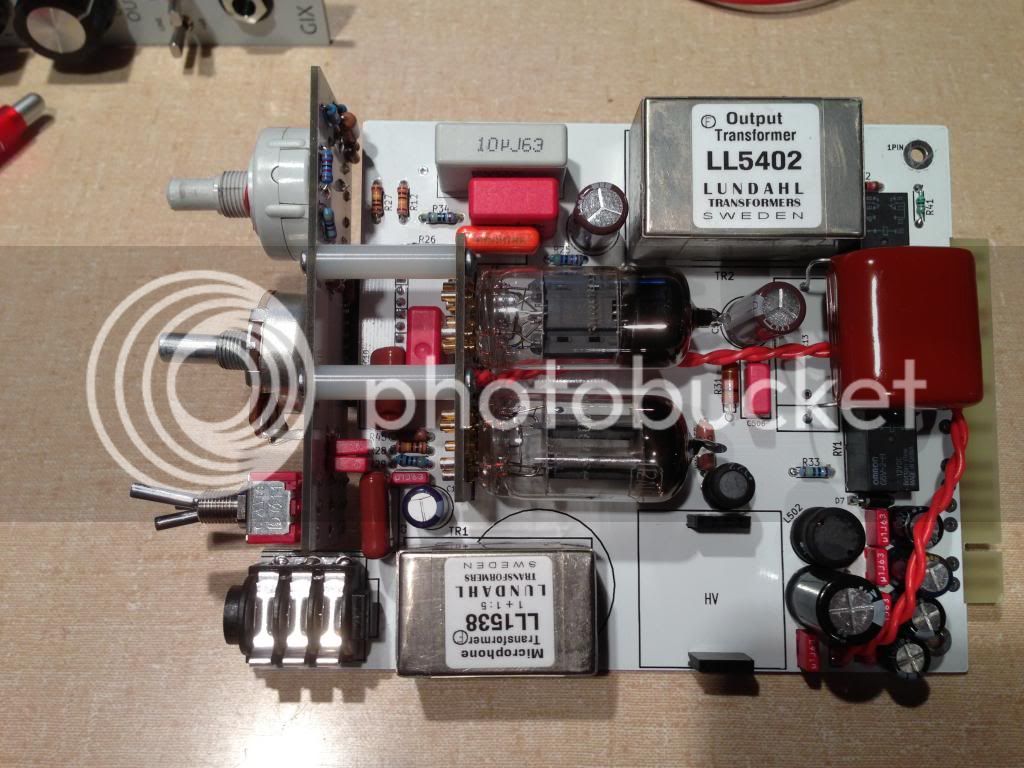
Note: Tack solder .1uF on back
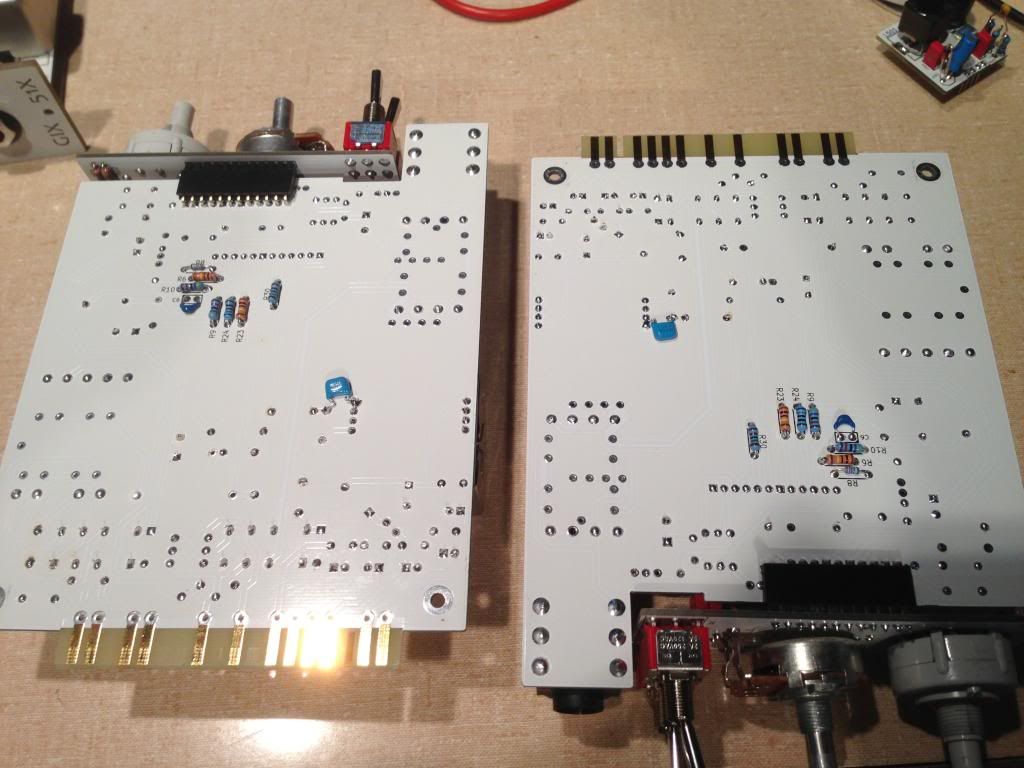
here are more details, if you are interested, in my testing results.
Inductor Tests
I have now tested 470uH and 390uH inductors with the HV Board as L501 (the power inductor). They both work using 0.200 ohm sense resistors. However they run at 99khz, and 70kHz respectively and I think that is too low, and I think the 330uH is the one I am going with. I think I want the switching to be further from the audible frequency range, and easier to filter.
I did some stress tests by putting a 47K resistor to ground at the driver stage plate, as a way to test these HV power supplies with higher current. (The 470uH works with 0.250 resistor, but add 5ma through that 47k resistor, and it starts to sink to lower voltages. They do work with the higher current with the 0.200 ohm resistors).
I like the 330uH inductors best, with the 0.250 ohm sense resistor. I have test it audibly, and with a dummy mic, and gain and output all the way up, it seems quieter, but I can't really tell.
I did some tests on the filtration for noise getting back on the 24V input power line, and the noise that gets through that filter is below my ability to measure. So I am not worried about the switcher dirtying up the power for the other modules.
Filter Inductors
As to filter inductor L503, I have tried filter inductors with a Q factor of 20 and of 90, and they all work the same as far as I can tell, they all will fit but they need to lean away from the HV board especially if you fit a shield on it. I have tried the Murata and the Bourne 1000uH inductors. I have the others, but I am happy with the Murata (I am getting the noise on the HV after filtering at -80dB (about .007V rms noise on 252V, .005V pk-pk). I can measure the noise in the drive stage (but it's not audible) so I am upping my resistor to 200 Ohms in the HV jumper.
I think any of the following will work for the L503:
Manufacturer Mouser
(I tested) Bourns 652-RLB9012-102KL RLB9012-102KL Q>20
(I tested) Murata 580-18R105C 18R105C Q>92
(I tested) Bourns 652-RLB9012-122KL RLB9012-122KL Q>15 - a bit bigger
I inspected an example of the following also, they fit, I think they would work fine.
Abracon 815-AIUR-02H-102K AIUR-02H-102K
Fastron 434-01-102J 434-01-102J
The cap to ground on the back of the board with this inductor is:
Murata 81-RDER72J104K8M1C1A RDER72J104K8M1C11A Multilayer Ceramic Capacitors MLCC - Leaded .1UF 630Volts 10%
I am using the 330uH power inductor (L501) with the .250 sense resistor as originally spec'd. ( See note below on Inductor tests I ran if interested), replacing L503 with a bourns 1200uH inductor and a .1uF cap on the back of the board to ground. I am using 200 Ohms as a HV Jumper, and I am putting shields on the HV board, because I think I heard the difference, but I am no longer sure and I am venting them because the get mildly warm and there is an electrolytic in there. I have updated the previous post with my final changes.
The preamp is quiet, and as I have been doing testing and the differences I hear are from individual noisy tubes, and I have replaced a couple and all 4 modules are quiet now.
I have attached an updated BOM to this post with the parts I used.
bb
Note: Leaning inductor L503

Note: Tack solder .1uF on back

here are more details, if you are interested, in my testing results.
Inductor Tests
I have now tested 470uH and 390uH inductors with the HV Board as L501 (the power inductor). They both work using 0.200 ohm sense resistors. However they run at 99khz, and 70kHz respectively and I think that is too low, and I think the 330uH is the one I am going with. I think I want the switching to be further from the audible frequency range, and easier to filter.
I did some stress tests by putting a 47K resistor to ground at the driver stage plate, as a way to test these HV power supplies with higher current. (The 470uH works with 0.250 resistor, but add 5ma through that 47k resistor, and it starts to sink to lower voltages. They do work with the higher current with the 0.200 ohm resistors).
I like the 330uH inductors best, with the 0.250 ohm sense resistor. I have test it audibly, and with a dummy mic, and gain and output all the way up, it seems quieter, but I can't really tell.
I did some tests on the filtration for noise getting back on the 24V input power line, and the noise that gets through that filter is below my ability to measure. So I am not worried about the switcher dirtying up the power for the other modules.
Filter Inductors
As to filter inductor L503, I have tried filter inductors with a Q factor of 20 and of 90, and they all work the same as far as I can tell, they all will fit but they need to lean away from the HV board especially if you fit a shield on it. I have tried the Murata and the Bourne 1000uH inductors. I have the others, but I am happy with the Murata (I am getting the noise on the HV after filtering at -80dB (about .007V rms noise on 252V, .005V pk-pk). I can measure the noise in the drive stage (but it's not audible) so I am upping my resistor to 200 Ohms in the HV jumper.
I think any of the following will work for the L503:
Manufacturer Mouser
(I tested) Bourns 652-RLB9012-102KL RLB9012-102KL Q>20
(I tested) Murata 580-18R105C 18R105C Q>92
(I tested) Bourns 652-RLB9012-122KL RLB9012-122KL Q>15 - a bit bigger
I inspected an example of the following also, they fit, I think they would work fine.
Abracon 815-AIUR-02H-102K AIUR-02H-102K
Fastron 434-01-102J 434-01-102J
The cap to ground on the back of the board with this inductor is:
Murata 81-RDER72J104K8M1C1A RDER72J104K8M1C11A Multilayer Ceramic Capacitors MLCC - Leaded .1UF 630Volts 10%




